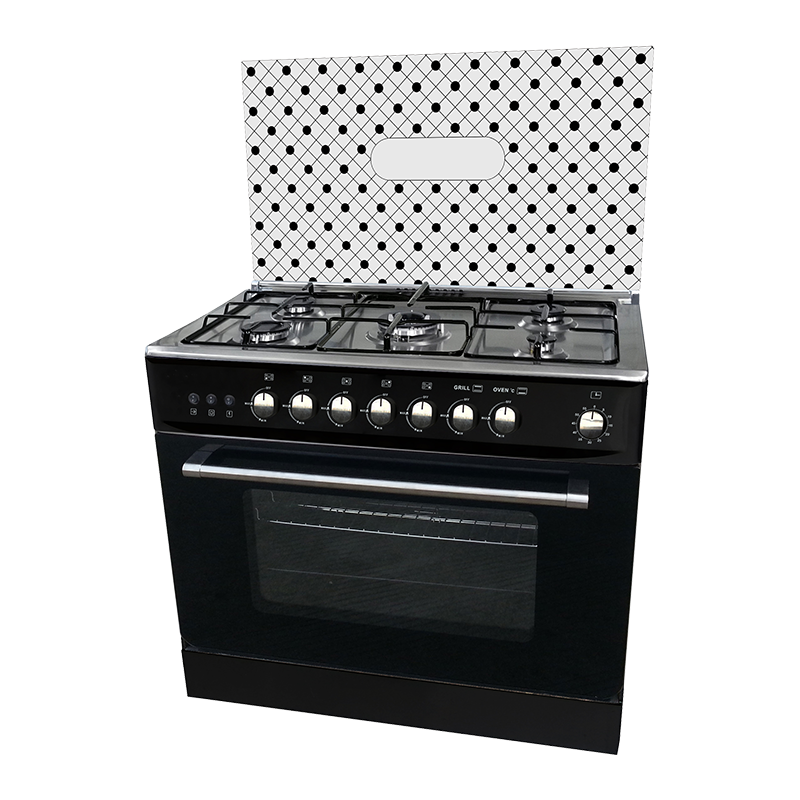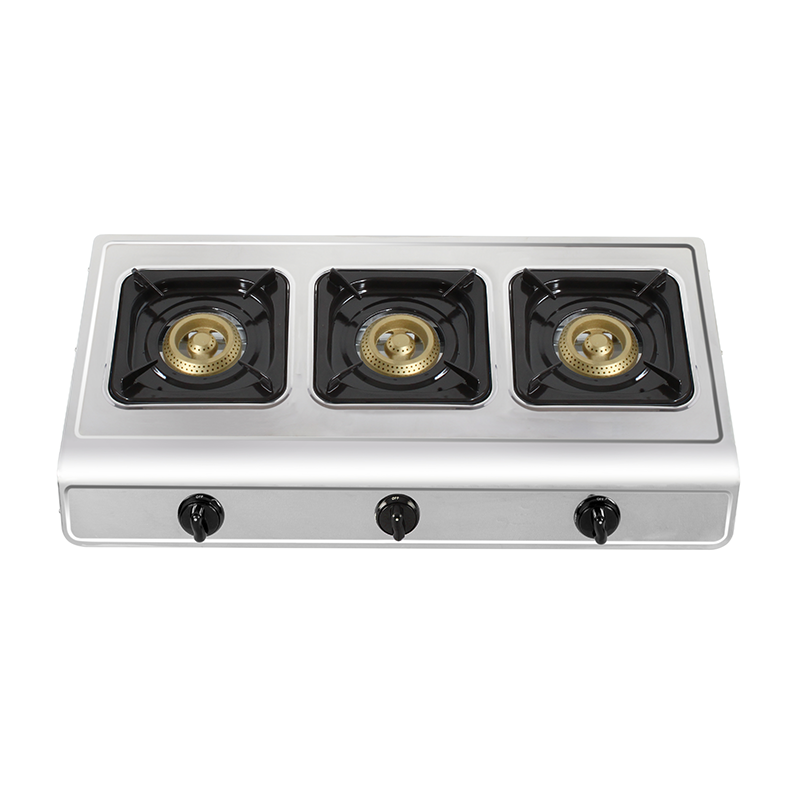I t was utterly exasperating how badly my stove behaved for the last half dozen years. One month the oven wouldn’t ignite. Another time a burner quit, then its neighbor went, too. (They’re pals in this conspiracy.) The broiler conked out again and again. Months would go by when I cooked everything in an oversized toaster oven because replacement parts couldn’t be had for one reason or another. The repairman was here so often during the pandemic that I offered him the guest room to ease the commute.
The latest repair on my 25-year-old 6-burner Viking gas range was going to be so expensive that I canceled the service visit. It’s embarrassing to say how much I spent repairing the thing; I joke that I probably sent Mr. Viking’s kid to college. It had to go. And with that decision came a wave of nostalgia, recollections of the many long hours the Old Girl and I spent together. She has been my partner, my pal, my indisputable cooking colleague. In a French restaurant kitchen, the stove is called “le piano.” In my small kitchen, the Viking was a baby grand that made beautiful music. Until it wasn’t. Gas Hotplate With Oven

I test recipes many days, and when I’m not cooking for professional reasons, I cook for family, for friends, for people who are sick or grieving and need to know someone’s thinking of them, for a local church pantry that offers nourishing meals. I’ve roasted a chicken at least every week, and I’ve been doing that since the stove was installed — well over 1,000 birds have turned golden brown in my hot oven. That doesn’t include the chicken tasting I did, in which the Old Girl labored for more than eight hours straight, so a group that I assembled could decide which local bird was best. And, of course, there were weeknight family suppers, dinners with friends, celebratory meals, a hundred dozen cookies, ditto cakes, zillions of sheet-pan dinners, trays of roasted vegetables, potluck contributions, food for hungry teenagers, and all the years I had three pressure cookers going on its burners on Sunday afternoons, food to tuck away for the days ahead and enough to deliver a week’s worth of meals in the last years of my mum’s life.
My old stove had no convection or self-cleaning dial. I purposely didn’t get any extra features because I thought there would be less chance of something going wrong. I thought we might be buried together. At the time I bought her, she was one of the only professional models available for home use. I had friends who installed powerful commercial stoves in their homes, but the safety issues gave me pause.
Rightly so, says Yale Appliance’s CEO Steve Sheinkopf, whose 100-year-old family business in Boston serviced my stove all these years. Because of fire codes, he says, commercial-grade appliances must not abut combustible cabinets. Another potential danger is that in operation, commercial stoves become very hot to the touch, which makes them a bad idea around children.
The Old Girl replaced the stove that came with the house — a 1950s vintage white enamel number with four weak burners, a tiny oven, and a broiler that pulled out of the bottom with an opening barely large enough to slide a pan into. Typical of its era, the stove boasted a built-in space heater. I would come home from work and even before I took my coat off, I would put two pots of water on to boil for pasta and vegetables. It took forever to see the little bubbles at the edge of the liquid when it was time to make supper.
The funny thing about the old trouper is how beautiful she still looked on her silver jubilee. I cleaned the burners every night because I can’t come down to breakfast and face a dirty cooktop. The day they took her away, she still looked regal, nearly pristine. When I told some guests recently that I was getting a new stove, they said they thought the Viking was new.
When I say how disappointed I am that my stove couldn’t make it past 25 years, Sue Bailey of Middleby Residential, the company that bought Viking a decade ago, tells me on the phone from Huntsville, Ala., “A 20-year life of a range is a pretty good life.”
On its website, This Old House writes, “Of the major appliances in a home, gas ranges have the longest life expectancy: 15 years.”
Ouch. They don’t make it easy to be a consumer. Are we last on the list when it comes to considerations?
I thought long and hard about where the old stove would go. But in good conscience, I couldn’t donate her to a church or community center because she didn’t come with a stellar reference. Once she was moved, something else might go wrong very soon. Yale’s Sheinkopf told me that no one wants a used stove anymore. One part of Yale Appliance Foundation, the company’s charitable arm run by his sister, Marilyn Newman, is to donate new stoves to schools and other gathering places that need them.
The crew from Yale Appliance who came to my house a few weeks ago to take the Old Girl out included a plumber, two men who would do the actual moving, one guy who ran the project (“I just make things look pretty,” he told me), and a jack of all trades who knew how to seamlessly fit everything so it was as neat and tidy as a custom install. It’s what the project manager called “snug it up.”
A post shared by Sheryl Julian (@sheryljulian)
Watching the team lug 500 pounds of steel out of my small kitchen was both frightening and fascinating. In a well-choreographed dance, the movers adjusted thick straps on their shoulders, attached them to the stove, and lifted the Old Girl like she was a pallet with sacks of potatoes, easing her through the door jambs of my quirky old house with nary an inch to spare on either side.
What replaced it? More angst. At first, we thought we would scale down to a 4-burner unit. To fill the smaller footprint, we’d have shelves built beside it and a countertop made. Then we ran the numbers and saw how little we were saving by not just replacing a 6-burner with another 6. Yale doesn’t carry Viking brand anymore. Where once the pro category for stoves was small, there are now dozens of ranges that claim to be more powerful than a regular home model. I informally asked other professional cooks and always heard good things about Wolf ranges, owned since 2000 by the Sub-Zero Group. Wirecutter, a site that tests consumer products, also likes the company.
My new Wolf has gas burners — not induction — and a gas oven. Again, no self-cleaning, no dual oven. The signature red knobs on the range are distinctive. Because I test recipes for a wide range of readers, and it’s already hard enough to accurately time the cooking of a dish, I didn’t want to throw induction into the equation. It takes getting used to (after you toss out half your incompatible pans) and in the summer rental where I used one a couple years ago, my cooking needed constant attention.
In March, the U.S. Consumer Product Safety Commission announced a request for information on the hazards of gas stoves because they emit harmful substances. One is nitrogen dioxide, which can increase respiratory problems. In May, the State of New York banned natural gas and gas stoves in most new buildings; New York City had instituted a ban on fossil fuel usage in new construction in 2021.
Sheinkopf says that induction stoves have become more popular, but at his company, “we’ve stressed ventilation.” A recent Consumer Reports article states that a good hood is important. A vented hood decreases harmful emissions but doesn’t eliminate them. There is presently no rule that gas stove buyers must also install hoods. But it’s not actually enough to have a hood, writes Consumer Reports, you need to actually turn it on when cooking. The article quotes a product safety staff member: “Despite 85 percent of gas stove users having a vent, hood, or fan above their stovetop, fewer than 20 percent use it every time.”
I have a powerful hood, vented to the outside, and I confess that I turn it on when things get smoky or smelly, but not every single time. With my New Girl, I promise to do better.
Sheinkopf says that no matter how hard I looked, I would probably not have found a place to donate the Old Girl. He tells me this because he can hear on the phone that I feel guilty she isn’t going to have a second life.
Then he offers a condolence he’s probably told customers a hundred times. Even though it sounds generic, it still feels good to hear: “We recycle all the metal. It’s going to be something else. Your Viking stove will be somebody else’s something else.”

Gas Hob With Electric Oven Sheryl Julian can be reached at sheryl.julian@globe.com.